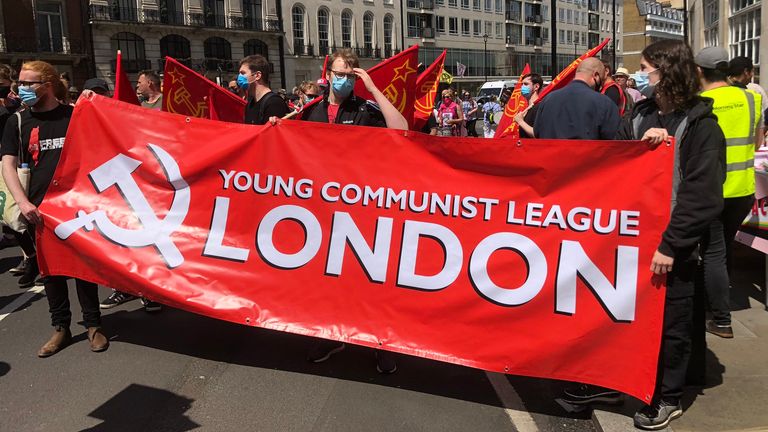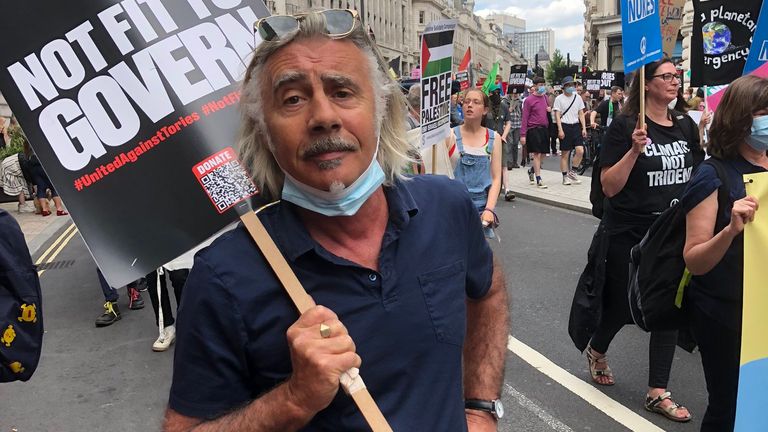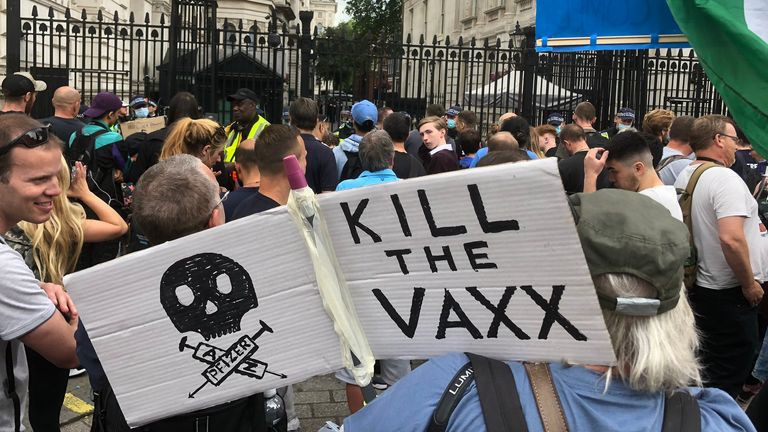‘Kill the Bill’ protests: From climate to Palestine, thousands of activists descended on London with one common goal
It was a hard-to-define protest mustering at the top of Regent’s Street.
Free Palestine was a strong theme, anti-austerity next in line, Black Lives Matter were mingling too and Extinction Rebellion brought their drummers to bring up the rear – giving a steady beat to the march as it followed a well-trodden path through London’s West End to Parliament Square.
But despite the plethora of causes, the thousands of protesters were all united against one thing – the Police, Crime, Sentencing and Courts Bill which they fear could curtail their right to protest.
Many were out for the first time since the restrictions on gatherings were lifted after lockdown and they expressed concerns the new legislation will bring new kinds of restrictions.
“Kill The Bill” has become the slogan.
Laura, dressed as Uma Thurman from the the Quentin Tarantino movie Kill Bill, travelled down from Doncaster with her friend, NHS worker Anne-Louise.
She said of the bill: “It is violation of our freedom to speak. It’s against our human rights and our democracy.”
Another protester, former Sex Pistol Glen Matlock said: “I’m primarily against the fact that we’re not going to be able to protest very soon.
“There are lots of different protests but that’s the main reason why I’m here today.”
Demonstrators threw dozens of tennis balls into the parliamentary compound and one man, who asked not to be named, said: “They have little messages on them. Most of them are not very nice.”
The bill, which could become law later this year, states that “a fair balance should be struck between individual rights and the general interests of the community”.
It would allow police to impose conditions such as start and finish times and maximum noise levels on protests.
The bill cites Extinction Rebellion’s protests of 2019, where parts of London came to a standstill for several days, affecting commuters and businesses.
However, it states: “This power can only be used when the police reasonably believe that the noise from the protest may cause serious disruption to the activities of an organisation or cause a significant impact on people in the vicinity of the protest.”
“Impact” is defined as “intimidation, harassment, serious unease, serious alarm, or serious distress”.
Former Labour leader Jeremy Corbyn, who spoke at the protest in Parliament Square, told Sky News: “The police and crime bill is a major threat to our liberties in this country, which will effectively give the police the power to decide whether we demonstrate or not – and that would be an affront to democracy anywhere in the world including here.”
A Home Office spokesperson told Sky News: “The right to protest is a cornerstone of our democracy.
“Our proposed measures are in line with human rights legislation and in no way curtail on the right to protest.
“Public order legislation is out of date, these new measures will balance the rights of protesters with the rights of others to go about their business unhindered.
“They will achieve this by enabling the police to better manage highly disruptive protests which have costs millions to the taxpayer and causes misery to businesses.”
As the hours wore on another set of protesters arrived in Parliament Square.
Anti-lockdown and anti-vaccination protesters threw tennis balls at Downing Street.
The police formed a line behind a set of barriers and became the focus of angry shouting. But the crowd started to disperse just in time for the Wales match.
And so amid all the other issues competing to be heard, a new battleground is emerging – the right to protest – to disrupt and cause unease and alarm.
What should communities and businesses be prepared to sacrifice in order to allow disruption in the name of a cause? And how much power do we give to police to maintain that control?
Source: Read Full Article







